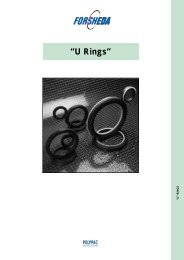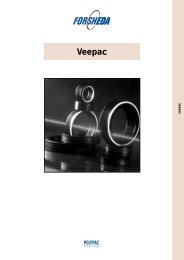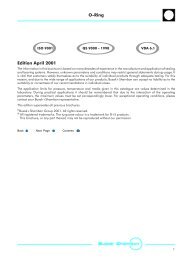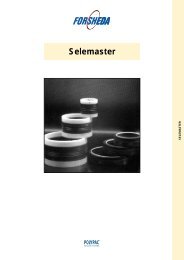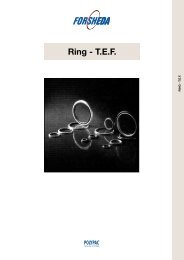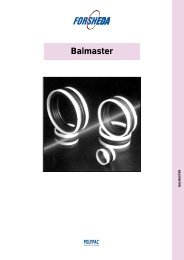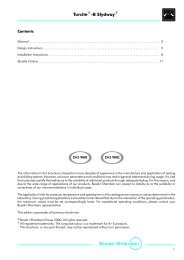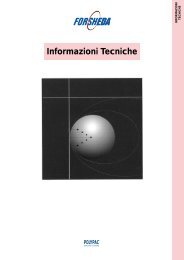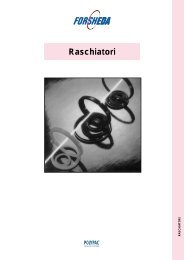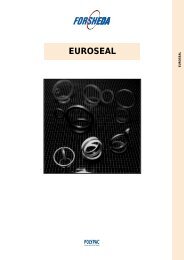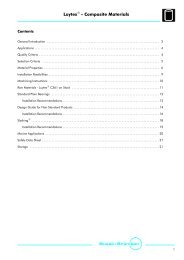Rotary Seals - Dilanda.it
Rotary Seals - Dilanda.it
Rotary Seals - Dilanda.it
Create successful ePaper yourself
Turn your PDF publications into a flip-book with our unique Google optimized e-Paper software.
<strong>Rotary</strong> Seal<br />
Surface finish<br />
In order to achieve an optimum sealing solution, <strong>it</strong> is also<br />
necessary to select su<strong>it</strong>able material pairing between the<br />
seal and the mating surface.<br />
Surface roughness<br />
The functional reliabil<strong>it</strong>y and service life of a seal depend<br />
to a very great extent on the qual<strong>it</strong>y and surface finish of<br />
the mating surface to be sealed. Scores, scratches, pores,<br />
concentric or spiral machining marks are not perm<strong>it</strong>ted.<br />
Higher demands must be made on the surface finish of<br />
dynamic mating surfaces than to static mating surfaces.<br />
The characteristics most frequently used to describe the<br />
surface microfinish, R a , R z and R max , are defined in<br />
ISO 4287. These characteristics alone, however, are not<br />
sufficient for assessing the su<strong>it</strong>abil<strong>it</strong>y in seal engineering. In<br />
add<strong>it</strong>ion, the material contact area R mr in accordance w<strong>it</strong>h<br />
ISO 4287 should be considered. The significance of these<br />
surface specifications is illustrated in Figure 5. It shows<br />
clearly that specification of R a or R z alone does not describe<br />
the profile form accurately enough and is thus not<br />
sufficient for assessing su<strong>it</strong>abil<strong>it</strong>y in seal engineering.<br />
The material contact area R mr is essential for assessing<br />
surfaces, as this parameter is determined by the specific<br />
profile form. This in term is directly depending on the<br />
machining process employed.<br />
Surface profile<br />
R a<br />
R z<br />
R mr<br />
closed profile form<br />
0.1 1.0 70%<br />
open profile form<br />
0.2 1.0 15%<br />
Figure 5<br />
Profile forms of surfaces<br />
Characteristics of the shaft surface<br />
The running surface for oil seals is specified in DIN 3760/61.<br />
The surface should meet the following requirements:<br />
Surface roughness R a = 0.2 to 0.8 μm<br />
R z = 1 to 4 μm<br />
= 6.3 μm<br />
R max<br />
Hardness<br />
55 HRC or 600 HV,<br />
hardness depth min. 0.3 mm<br />
Latest information available at www.busakshamban.com<br />
Ed<strong>it</strong>ion April 2006<br />
17



